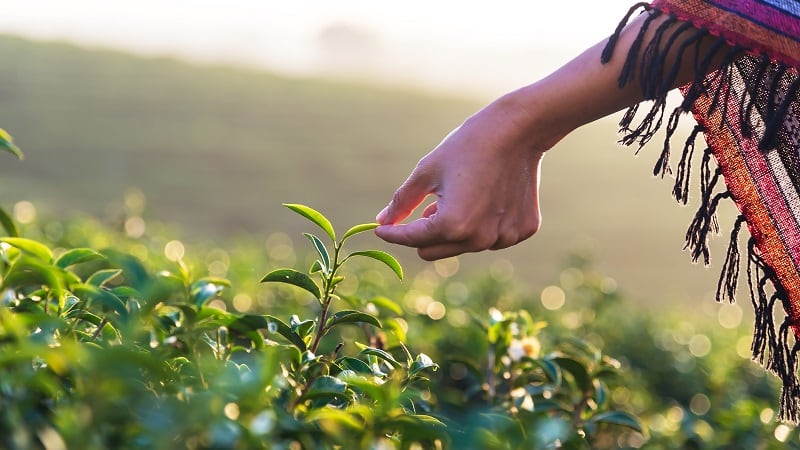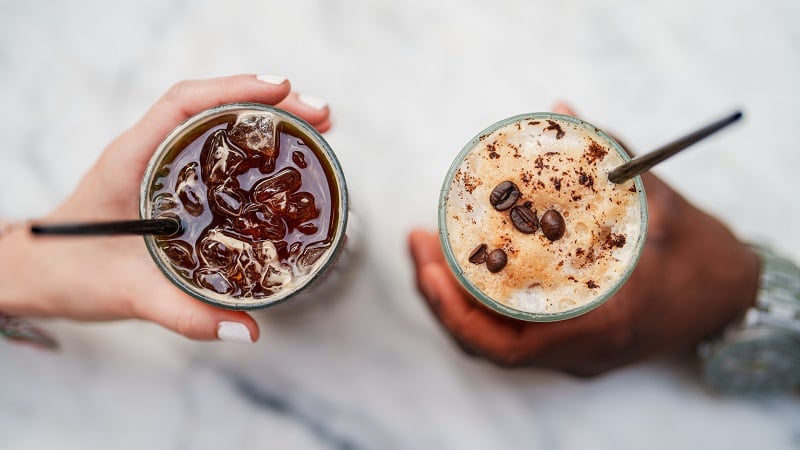Tea’s history and global trade events are intrinsically linked, meaning the future of the world’s second favorite beverage – after water – is steeped in uncertainty amid the Trump administration’s ongoing trade war.
“Tea is one of the commodities that globalized trade. It cannot be grown in most of the West. And so you go back to the East India Tea Company - and the American Revolution - tea was one of those commodities that started to create an interdependent world. So, tea is absolutely impacted by tariffs,” Seth Goldman, CEO and co-founder of Just Ice Tea, said.
Goldman: Tariffs ‘biggest impact is the uncertainty’
The iced tea industry is gearing up for the busy summer season. At the same time, many CPG brands, including Just Ice Tea, are assessing the impact of tariffs in real-time and scenario planning to prepare for whatever comes next time, Goldman explained.
Tariffs’ “biggest impact is the uncertainty” brewing in the tea market and the broader economy, he emphasized.
“We get teas from all around the world, and there are some countries that are impacted differently by tariffs. So, for example, China is one of our supply countries, and we have not bought tea from Argentina, but we could. If we could match the taste of the tea from China and get it to a comparable place and the cost of goods is much better, we could make that shift,” Goldman elaborated.
“We are a little less movable or flexible because of the organic and Fairtrade. So, I cannot go to any tea garden,” he added.
Just Ice Tea is well-positioned to weather current trade tensions for the near future, having purchased all the tea it needs for 2025, Goldman noted. Additionally, the brand’s tea supply is already in the US, avoiding tariffs for the current moment, he added.
“Regarding China, the level of those tariffs are unsustainable and the costs cannot be overcome. So, the choice is to raise prices or to replace any Chinese tea with another origin, which may not be very straightforward.”
Peter Goggi, president of the Tea Association of the U.S.A.
Many other tea brands are in a similar position, meaning consumers can drink their tea this summer without fear of price hikes, Peter Goggi, president of the Tea Association of the U.S.A., explained.
“Some companies built inventories or had inventories in place that will allow them to soften the cost of the tariff, in terms of passing along the cost as a price increase. Some will try to squeeze out efficiencies in their supply chains to mitigate the cost. However, if the tariffs remain in place, there is no doubt that the cost of those tariffs will be passed through to the customer,” Goggi elaborated.
Tea Association: China tariffs ‘are unsustainable’
The Trump administration’s proposed plan to right-side trade imbalances with countries through tariffs will directly impact US imports from many tea-producing countries. As of April 30, this tariff plan is paused until July 9 amid trade negotiations.
The US imports $550 million worth of tea from Japan, India, Argentina, China and Sri Lanka, accounting for $107 million, $65.1 million, $57.9 million, $55.5 million and $46.7 million in imports, respectively, according to data aggregated by logistics company OEC.
Under the proposed reciprocal tariff scheme, Argentina, Japan, India and Sri Lanka would be subjected to a 10%, 46%, 52% and 88% reciprocal tariff, respectively, which are on top of existing tariff increases.
“Virtually all tea-growing countries as well as those shipping finished product into the US are being assessed at a 10% tariff. The notable exception is China, in which all tea products are being assessed at a 152.5% tariff,” Goggi elaborated.
“Regarding China, the level of those tariffs are unsustainable, and the costs cannot be overcome. So, the choice is to raise prices or to replace any Chinese tea with another origin, which may not be very straightforward,” he added.
Sourcing tea is not the only concern for brands
Tea supply chains might hold under the tariff pressure, but that is not the only cost brands need to watch, Goldman explained. Tea ingredients only cost about 4 cents per bottle of Just Ice Tea, but US-produced glass bottles cost about 20 cents, Goldman noted.
“Sometimes, our agave cost is more than our tea cost. So, at least for now, we are being told there is no anticipated increase in tariffs with Mexico, but ironically, that one could have a big impact,” Goldman said. “Tea, we actually have more flexibility to move around from China to Argentina and Mozambique to India. With agave, we are more limited.”
Despite supply chain complications, Goldman said he does not expect innovation to slow , but brands will need to “get more creative” with their supply chain and product development strategy.
Assessing tariffs’ impact on consumer confidence
Trade uncertainty eventually trickles down to consumers, as confidence in the economy dampens, but the impact on the CPG industry is a bit unclear, Goldman noted.
The Conference Board reported that the Consumer Confidence Index fell by 7.9 points in April – the lowest point in five years.
“With the stock market fluctuating the way it is, it lowers consumer confidence. And so ultimately, that can convert to consumer behavior,” Goldman said. “Consumer confidence impacts people buying TVs or big expensive things. What about a $2.99 bottle of tea? That is less clear.”
The iced tea market by the numbers
The shelf-stable iced tea market started 2025 on a sour note with both units and dollar declines, according to Spins data. Shelf-stable iced tea sales came in at $25.601 million for the 12 weeks ending March 23, declining 12.7% in dollars and 12.9% in units. These declines are slightly better than full-year results ending March 23, where dollars declined by 14.1% and units by 14.8%, according to Spins data.
Despite the numerous economic headwinds, the market volatility has not reached the level of the COVID pandemic or the 9/11 tragedy, Goldman noted.
Just Ice Tea is full-steam ahead with its growth plans, including expansion into Target stores with a multi-pack offering and rollouts in CVS and Walmart, he added.
“9/11 was a real shock – everything froze. And whether it was talking to investors, buyers, stores taking on new products, all that just froze, and we are not there yet,” said Goldman, who at the time ran Honest Tea. “This is just uncertainty, which is certainly creating concern but not yet freezing activity.”
The Tea Association is concerned that a tariff-induced slowdown in the tea category could make it harder for US consumers to access healthy beverages, Goggi noted.
“On any given day, over 159,000,000 Americans are drinking tea. It is an important beverage for people to consume. Any tariff on tea potentially impedes the consumption of this beverage, negatively impacting human health. Tea is currently under consideration for being further highlighted in the Dietary Guidelines for Americans 2025 Guidelines as well as having been determined as being ‘healthy’ per the FDA’s final rule,” Goggi elaborated.
Is the tariff damage already done?
US consumers could feel tariff impacts on a host of their favorite products, even if trade deals are reached, as many countries are actively working around the US in trade negotiations.
US imports from China have slowed, and major retailers, like Target and Walmart, are starting to raise concerns about empty shelves this summer due to the trade slowdown. This week, Walmart and Target resumed business with Chinese suppliers, following a several-week pause on tariff concerns, as first reported in CNN Business.
Imports into the US are expected to decline 20% in the second half of 2025, for a net drop of 15% for 2025, unless the trade situation changes, according to analysis from the National Retail Federation and consulting firm Hackett Associates.



